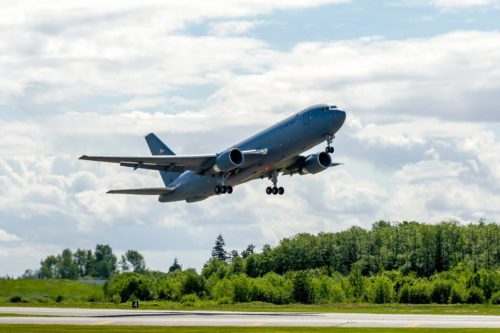The mighty KC-46A Pegasus, Boeing’s pride and joy of the skies, has encountered some turbulence. Plagued by technical glitches and safety concerns, this aerial refueller has faced a $7 billion headwind. But instead of throwing in the towel, Boeing is rolling up its sleeves and taking the Pegasus back to the hangar for a thorough overhaul. Six critical issues stand between the Pegasus and its full potential, and here’s how Boeing plans to fix them, one by one. Michael Marrow from Breaking Defense toured Boeing’s Seattle-area facilities where the KC-46A is built and officials explained how they plan to tackle each issue.
First on the operating table is the Pegasus’s eyesight. The panoramic cameras, vital for spotting approaching aircraft in various weather conditions, were prone to developing a blurry vision. The Remote Vision System (RVS), the eyes directly on the refueling boom, couldn’t handle the dynamic lighting of dawn and dusk, creating a potential for a mid-air collision. Enter RVS 2.0, a complete overhaul of the vision system. New, sharper cameras equipped with powerful processors will replace the old ones, promising a crystal-clear view for pilots and eliminating two major safety concerns. By late 2025, the Pegasus will see the world with newfound clarity.
Next, the issue of the “weak handshake.” The A-10 Warthog, a slow and steady flyer, couldn’t connect with the Pegasus’s boom due to a sluggish actuator, the hydraulic muscle that extends the refueling rod. This mismatch in speed meant the Warthog couldn’t maintain a firm grip, jeopardizing both aircraft. Boeing’s fix is a new, smaller, and more dynamic actuator from Moog, currently undergoing rigorous testing. By 2025, the Warthog will be back on the refueling menu, its thirst for fuel quenched by the Pegasus.
But addressing just the surface level wouldn’t suffice. Boeing engineers delved deep into the KC-46A’s internal plumbing, uncovering leaks and cracks that threatened mission-critical fuel systems. The drain masts for the auxiliary power unit, for example, succumbed to unforeseen vibrations, cracking like delicate china. Boeing’s response: a double whammy of reinforcements and sturdier replacements. The labyrinthine fuel manifold, a “tube within a tube” marvel, also faced challenges. Installation issues with its seals led to fuel leaks, creating a fire hazard and a logistical nightmare. The fix? A new, more flexible flex seal, currently being rolled out across the entire fleet.
Even seemingly minor details haven’t escaped Boeing’s attention. The receptacle drain line, a small but vital artery near the cockpit, proved susceptible to cracking in cold weather. Instead of a simple patch, Boeing is giving it the same “tube within a tube” treatment as the fuel manifold, ensuring smooth drainage even when the mercury dips.
For more information, hit the Source below
